Shrines and temples of World Heritage sites such as Tosho-Gu Temple
Audio Guide for Nikko area, such as natural landscapes and hot springs
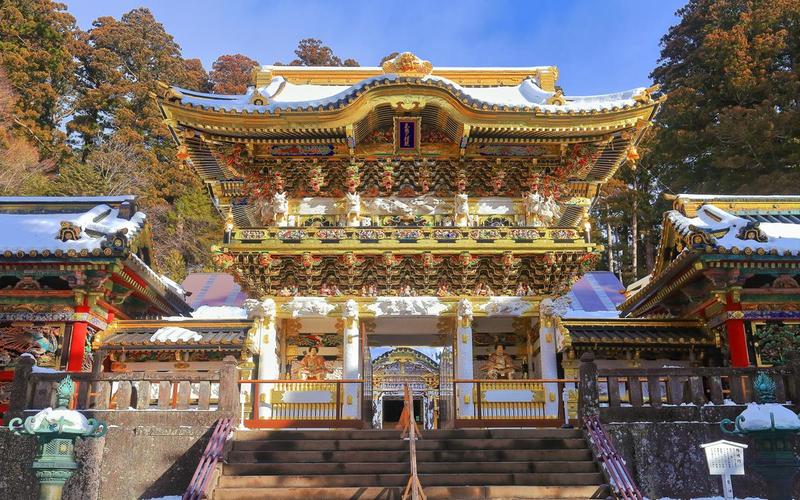
Nikko Area Guide
Nikko is a tourist destination that represents Tochigi Prefecture. Alongside places like Hakone and Atami that are also in the Kanto region, it is a highly popular natural escape just outside of Tokyo. There is "Nikko Tosho-Gu Shrine" that enshrines the first shogun of the Edo period /The Great/ General Ieyasu Tokugawa. The shrine is surrounded by natural beauty and there are other historical shrines and temples here as well. Few sightseeing spots here are flashy or trying to keep up with the times; instead they choose to offer a calm and relaxing place to unwind. Among them, there are numerous sites registered as "World Heritage" such as Futarasan-Jinja Shrine and Nikko-zan Rinnoji Temple. Nikko is said to be a tourist spot you will want to visit more than once. There are plenty of places to explore: Kegon Falls, Lake Chuzenji, Irohazaka Winding Road, and so much more. Nikko always has something to see in winter, spring, summer or fall.
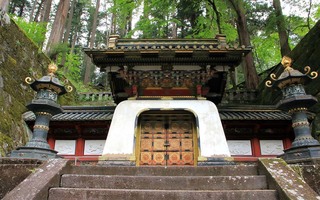
A Taiyuuin Mausoleum
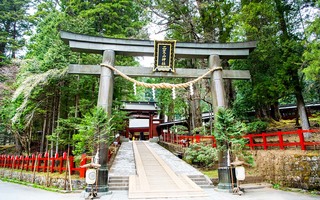
B Nikko Futarasan-Jinja Shrine
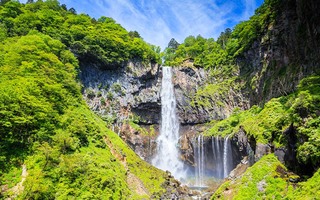
C Kegon waterfall
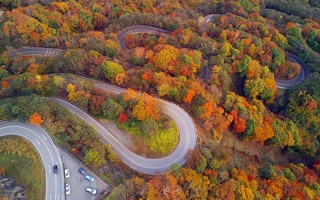
D Irohazaka Winding Road
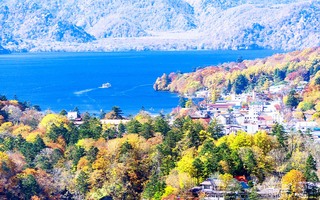
E Lake Chuzenji
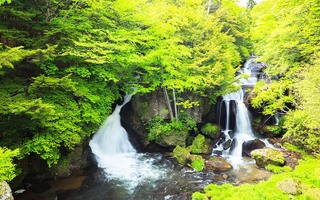
F Ryūzu Waterfalls
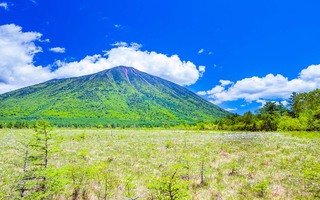
G Senjogahara
09-001-02%E6%B1%9F%E6%88%B8%E3%83%AF%E3%83%B3%E3%83%80%E3%83%BC%E3%83%A9%E3%83%B3%E3%83%89%E6%97%A5%E5%85%89%E6%B1%9F%E6%88%B8%E6%9D%9102.jpeg)
H Edo Wonderland Nikko Edomura
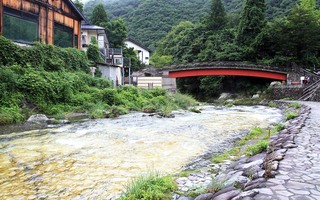
I Yunishigawa Hot Spring
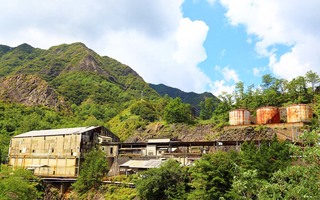
J Ashio copper mine
A
Taiyuuin Mausoleum

The Daiyu-In-Pyo Temple is located on the grounds of the Nikko Mountain Rin-No-Ji Shrine and it is here where the 3rd generation shogunate Iemitsu Tokugawa is enshrined. Daiyu-In is Iemitsu’s Buddhist name and the temple is also registered as a World Heritage Site. Because Iemitsu deeply respected his grandfather Ieyasu, he wrote in his will that he would “serve Ieyasu even after death."
The 4th generation Shogun Ietsuna carried out orders from that will to construct a mausoleum, or a Buddhist tomb that enshrines the dead. The building faces Tosho-Gu Shrine and it is believed that Iemitsu is respectfully watching over Ieyasu. Contrary to the Tosho-Gu Shrine, which was built with Shinto syncretism, or the architecture of "Gongen Zukuri," Taiyuuin Mausoleum was built on pure Buddhist principles of "Butsuden Zukuri." According to the commandments, Iemitsu’s tomb should not outshine that of his grandfather, so the scale of the building is smaller than that of the Nikko Tosho-Gu Shrine, which enshrines Ieyasu’s remains. While suppressing glamor for Buddhist austerity, the main hall, connecting rooms and the hall of worship are still listed as national treasures as buildings conceptualized in fine detail.
B
Nikko Futarasan-Jinja Shrine

Nikko Futarasan-Jinja Shrine was established 1200 years ago by the monk Shoudo Shounin, who chose Nikko mountain to be his training ground. Shoudo started the practice of Nikko mountain worship and this shrine has continued the practice ever since.
This shrine worships the God "Onamuchino-Mikoto", the bearer of good luck and marriage. In addition, this place is also a trailhead for Mt. Nantaisan. During hiking season, you will see hikers praying at the shrine before making their way up the mountain. Nikko Futarasan-Jinja Shrine is one of 103 buildings, including Tosho-Gu Shrine and Rin-no-Ji temple, listed as a world heritage "Shrine of Nikko." The most noteworthy place is the beautiful red "Shinkyo Bridge" crossing over the entrance of Nikko. This wooden bridge is 28 meters long and features an arch design called "Hanebashi.” It is the only kind of Hanebashi in Japan to hang over a mountain valley. It is known as one of Japan 's three great bridges along with Kintaikyo bridge in Yamaguchi prefecture and Saruhashi Bridge in Yamanashi Prefecture. In the past, the bridge was only used for special sacred events and general use was forbidden, but now anyone can cross it.
C
Kegon waterfall

Nikko is known as "the land of 48 waterfalls" but while many waterfalls can be found here, the Kegon waterfall is the most famous of all. Kegon Falls, once called the Ejiri Falls, is said to have formed 20,000 years ago and considered as one of Japan 's three famous waterfalls. With water cascading down to Chuzenji Lake from the quay 97 meters up, it is a splendid natural sight to behold.
Over 100 years ago, you could only see the waterfall from a distance. But around the year 1900, a teahouse was opened near the basin of the waterfall, and it is now possible to see the waterfall close up. Then, in the year 1930, some of the hard rock was carved out to make way for an elevator. You can take the elevator up to the "Kanbaku-dai,” a deck that puts you right next to the falls where you can feel as if the water is crashing onto you. In 1931, it was chosen as a select scenic spot of Japan, and in 1990, it made it to the "Japan's 100 Waterfalls" list.
D
Irohazaka Winding Road

Nikko Irohazaka Winding Road is the nickname of National Highway 120, which goes from Lake Chuzenji to Umakaeshi of Nikko Town. The name Umakaeshi means "returning a horse" and it refers to the steep mountain road that was so steep, they had to turn their horses around. It was in 1954 that Irohazaka was developed as a highway and at that time, there were 48 sharp curves in the road, which is referenced in the song "Iroha 48 Words."
However, with economic growth, the number of cars and sightseeing buses passing through increased rapidly and caused serious traffic jams on the hill. In 1965, a second Irohazaka road was created, branching off from the Umakaeshi and the original road was restricted to in-bound traffic. In addition, even with the rebuilding of the original Irohazaka, the total number of curves remained at 48. The road is still a one way with the signs "I, Ro, Ha" displayed at each curve. You can cruise around the hill and spot these character street signs that can be found nowhere else. Nevertheless, because of the seasonal high traffic congestion problems especially during national holidays and the changing of leaves in the fall, there are rest areas now available mid-route. At the Akechidaira Observatory, a visitor favorite, located on the second Irohazaka, you can see Kegon Falls and Lake Chuzenji.
E
Lake Chuzenji

Lake Chuzenji, located in Nikko National Park, is the largest lake in Tochigi Prefecture, covering an area equivalent to 250 Tokyo Domes. It is also the highest altitude lake in Japan, sitting 1,269 meters above sea level. The lake is believed to have been formed from the volcanic activity of Mt. Nantaisan some 2,000 years ago as the valley stopped the flow of lava. Similar types of lakes are Akanko Lake and the Five Lakes of Mt. Fuji. Although it is not well known, there is a small island called "Kouzuke Island" in Lake Chuzenji. As legend has it, the God of Mt. Nantaisan and God of Mt. Akagisan fought over possession of Lake Chuzenji. When the God of Mt. Nantaisan won, the island was created in memory of his victory. There are also graves here believed to be those of the eminent monk Shoudo Shonin and Jigen Daishi, a monk who served the great general Iyeyasu Tokugawa. The island is only 100 meters from shore, so you can walk to it when the water level of the lake is low.
F
Ryūzu Waterfalls

Nikko National Park, tucked away in the mountains of Tochigi prefecture, is famous for its many waterfalls. Contrary to the dramatic intensity of Kegon Falls, Ryūzu Falls gained popularity for its glorious mountain scenery. The waterfall is the flow of a mountain stream running 210 meters long and the drop is about 70 meters high. The mountain stream falls suddenly over a steep slope and hits a big rock at the top, splitting the stream into two and twin waterfalls are created. Because of its unique shape, the waterfall takes its name from a word meaning the "Head of the Dragon", as it resembles the head of a dragon from the front. Seasonal foliage enhances the beauty of the falls even more. In May and June, you can spot red and purple trees of Rhododendron wadanum. The autumn leaves in September are a vivid contrast to the blue sky on the water surface. The viewing area at the front of the waterfall is a great place for photos.
G
Senjogahara

Senjogahara is a moor wetland in Nikko National Park. It’s name, meaning "battlefield," comes from the myth of the God of the Mt. Nantaisan and the God of Mt. Akagi-Zan fighting here over the possession of Lake Chuzenji. The elevation is 1,394 meters above sea level and it is 120 meters higher than Lake Chuzenji. This vast area of wetlands covers about 85 Tokyo Domes. A cleverly designed sidewalk called a "Shizen Kenkyu-Ro," meaning natural research road, is a hiking trail that you can walk along for about two hours. In fact, Senjogahara once was a lake and features 350 species of native plants. The middle of June until the beginning of August is when beautiful Eriophorum and Spiraea flowers bloom. Late September to early October is another recommended time to visit when the leaves are at their most vibrant. You can also spot many species of wild birds. In 2005, it was registered as a wetland of the "Ramsar Convention" as "Oku-Nikko Wetlands."
H
Edo Wonderland Nikko Edomura
09-001-02%E6%B1%9F%E6%88%B8%E3%83%AF%E3%83%B3%E3%83%80%E3%83%BC%E3%83%A9%E3%83%B3%E3%83%89%E6%97%A5%E5%85%89%E6%B1%9F%E6%88%B8%E6%9D%9102.jpeg)
Edo Wonderland Nikko Edo Village is a theme park made to transport you back to the Edo era of feudal Japan. On the premises, which is large enough to fit 10 Tokyo Domes, there are familiar roads, post stations, the houses of merchants, samurai houses, a ninja village and town replicas just like the ones you have seen on Japanese historical TV dramas and movies.
The best way to experience the park is to take the “when in Rome” saying literally and do as Edo people did. You can borrow some costumes for samurais, princesses, townspeople and other famous characters of the past. While in your village attire, try out ancient martial arts and craftworks.
At the theater, you can catch some famous Edo comedy shows as well as ninja and traditional performances. "Ninja Kai Kai Tei" is a popular attraction here. The oblique-shaped building plays tricks on your perception of space as soon as you enter it, making it difficult for you to distinguish the ceiling, the wall, and the floor. The further in you go, the more your equilibrium gets thrown off. It is said that this place was built for ninja training purposes, so it seems that there are many people who challenge themselves by repeatedly going into the building to see if they are suitable for becoming a ninja. Now let’s go into the land of historical drama.
I
Yunishigawa Hot Spring

At the end of the Heian period in the 12th century, the army of the Heike clan, who was defeated in the battle of Genpei, fled to the remote mountains of Yunishigawa and abroad. The village founded by the Heike is known as Ochiudo Shuraku, or “the village of settlement.” The Yunishigawa Hot Springs is part of this village. The fallen people eventually found peace and lived a quiet life, but they constantly hid in the shadow of the ruling Genji, who forbid them from celebrating May festivals, keeping livestock, or having bonfires. The Heike dubbed their new way of living "Heike no Sato," which was born out of survival and the village continues to honor this lifestyle to this day. Traditional entertainment and folklore, rustic tools and statues of former leader "Tairano Kiyomori" are displayed here.
At a area called the Heike Shuraku, there are inns that have been refurbished from old private housing and decorated modestly, true to the village’s manifesto. The Heikezuka, or burial mounds, stand solemnly here and is said to contain buried armor and weapons. You can experience the stillness of a hidden village that is wrapped in silence day and night.
Meanwhile, the famous "Kamakura Snow Festival" is held here in this village every winter. More than 1,000 kamakura snow huts about 40 cm tall are lined up. When every candle inside the huts are lit, the snowscape is illuminated in a surreal glow. The beauty of the mysterious lit-up site completely fascinates onlookers, and it is also listed as a heritage nightscape of Japan.
J
Ashio copper mine

The Ashio Copper Mine lies in the the Ashio area in Nikko and is listed as a National Historic Site of Japan as the "Former Ashio Copper Mine Site.” In 1610, two farmers discovered copper here and mining started in full swing, though the mines have reached their peak output. For a long time, Ashio supported the financial affairs of the shogunate as Japan's largest mine city. The city was also called "Ashio Sengen" meaning "1000 residents of Ashio" and the city was very lively at the time. However, due to serious pollution problems, the mountains were sealed off in 1973, closing the curtain on the mining industry here. The tunnel dug there is almost 1,200 kilometers long, about the same distance from Tokyo to Hakata. Part of the mine has been converted into a tourist attraction, and it is possible to go about 700 meters into the tunnel by trolley train. Strict labor conditions at the time have been depicted through a life-size doll diorama, and you can understand not only the history but also the burden of excavation work.
There are sites of railroad tracks that became obsolete and a red rusty refinery that you would only see in movies. It is a place where you can see the foundation of the rich industrial economy that built an era.